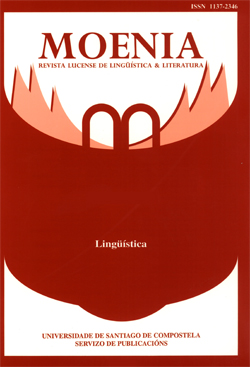Elena Bajo Pérez
Universidade de Salamanca
Spain
Vol 23 (2017), Monográfico. Morfosintaxis y semántica del verbo en español: historia y descripción / Susana Azpiazu, coord.
Abstract
In Spanish, irreality is a modal value linked to the epistemic modality, since, essentially, it can be understood as implicit negation or as improbability. The scope of epistemic modalization is conceived as a continuum (from implicit negation to maximum probability), but, in Spanish, grammatical and systematic procedures -expressed through specific verbal forms- that serve to express improbability (the fact that it is unlikely that something will or will not happen) are not only different but also opposed to grammaticalized procedures that serve to express probability (the fact that something is likely to happen / to be or not to happen). On the contrary, improbability in all its degrees (even if presented as rhetorical improbability) and implicit negation, which constitute the basic manifestations of irreality in Spanish, are not opposed in the verbal system and can only be distinguished contextually. As for the other semantic contents usually associated with irreality, although they can be related to different pragmatic values (such as courtesy, attenuation, fantasy, etc.), they can also be based on implicit negation, not of the propositional content but of some other kind of information. All in all, this work aims to show the need to recognize irreality as a grammaticalized modal content (in its different semantic nuances) in Spanish, in order to understand the nature of verbal modes and modal oppositions in depth.
Keywords:
epistemic modality, irreality, irreality and courtesy, irreality and play, irreality and fantasy, irreality and rumour, irreality and corroboration, imperfect, conditional






